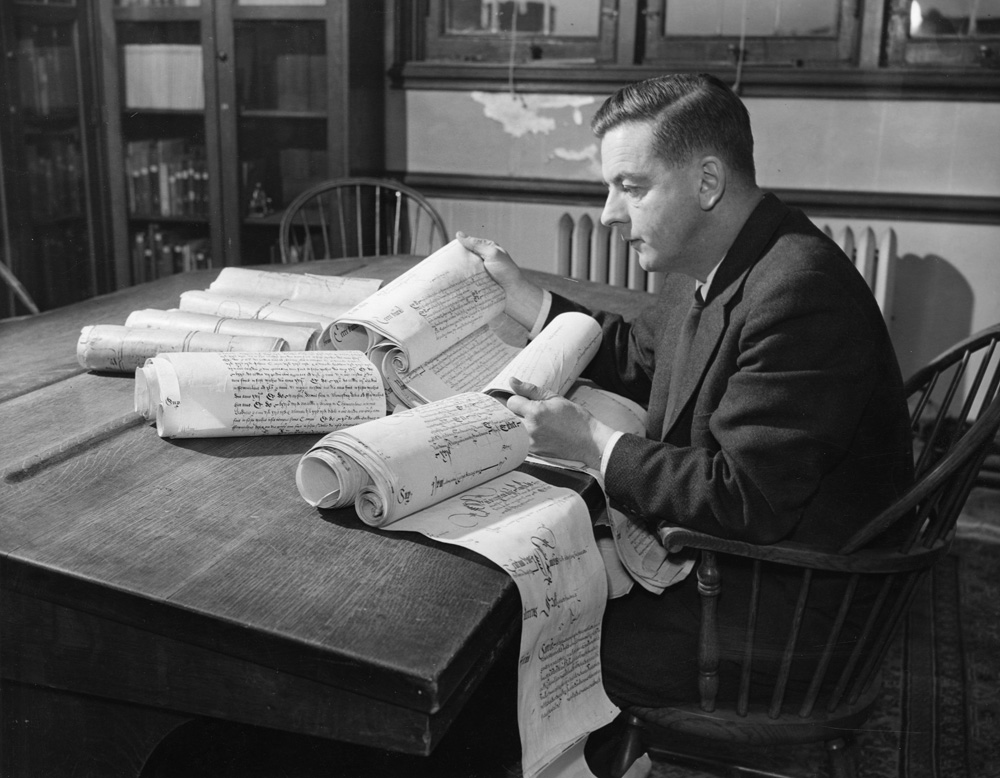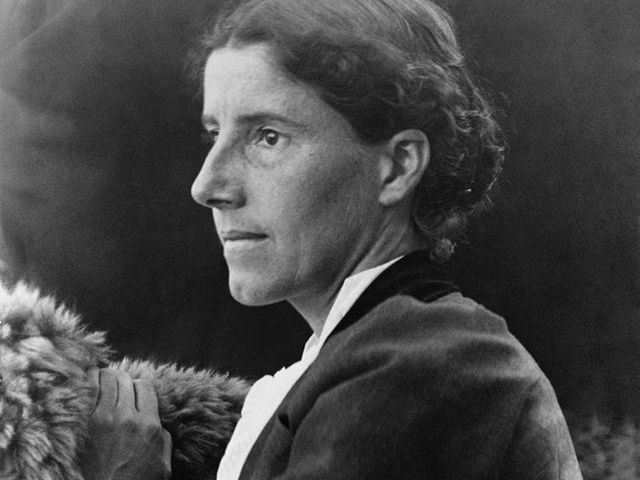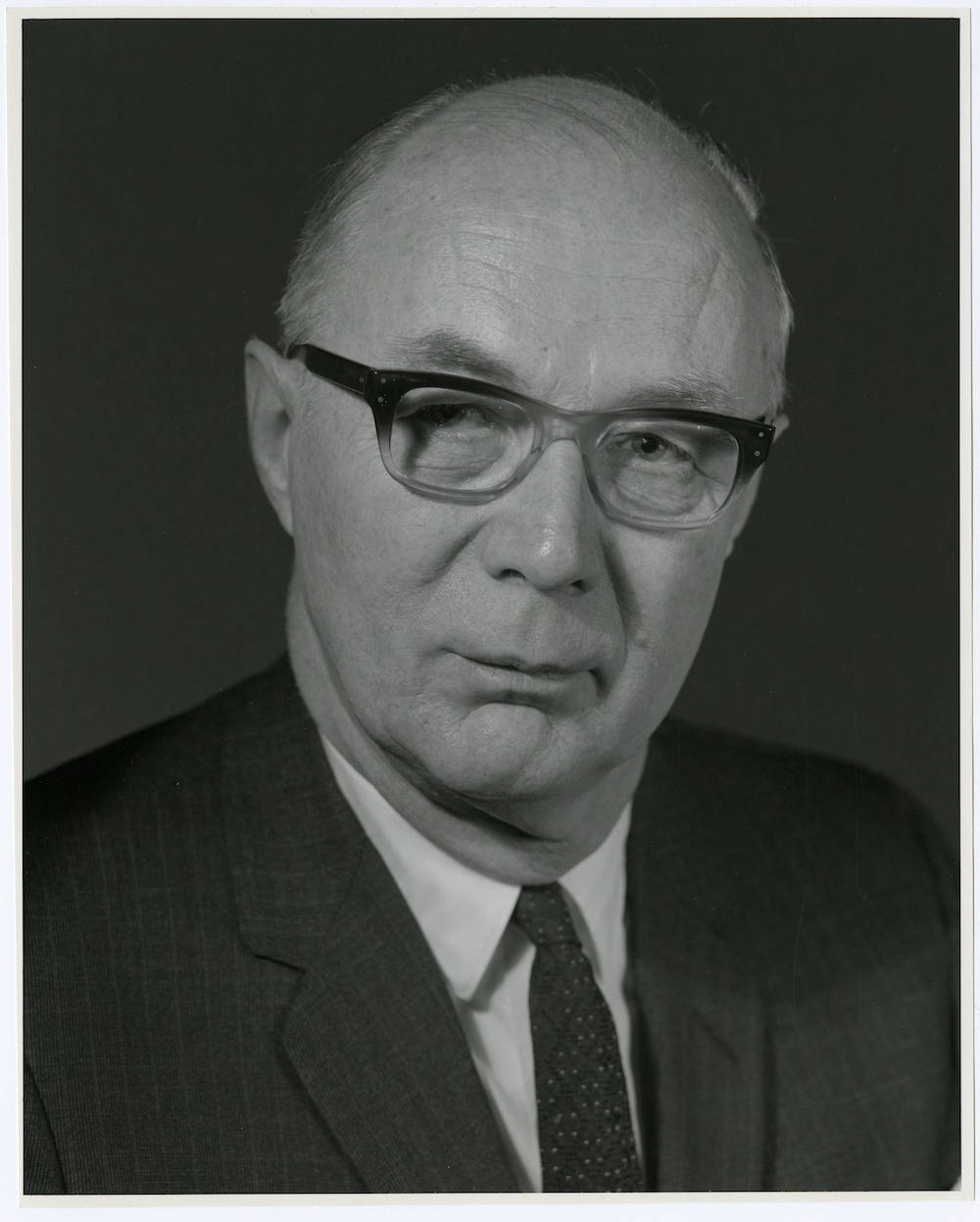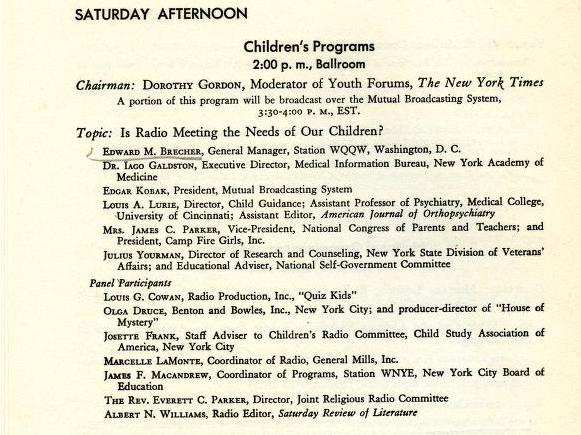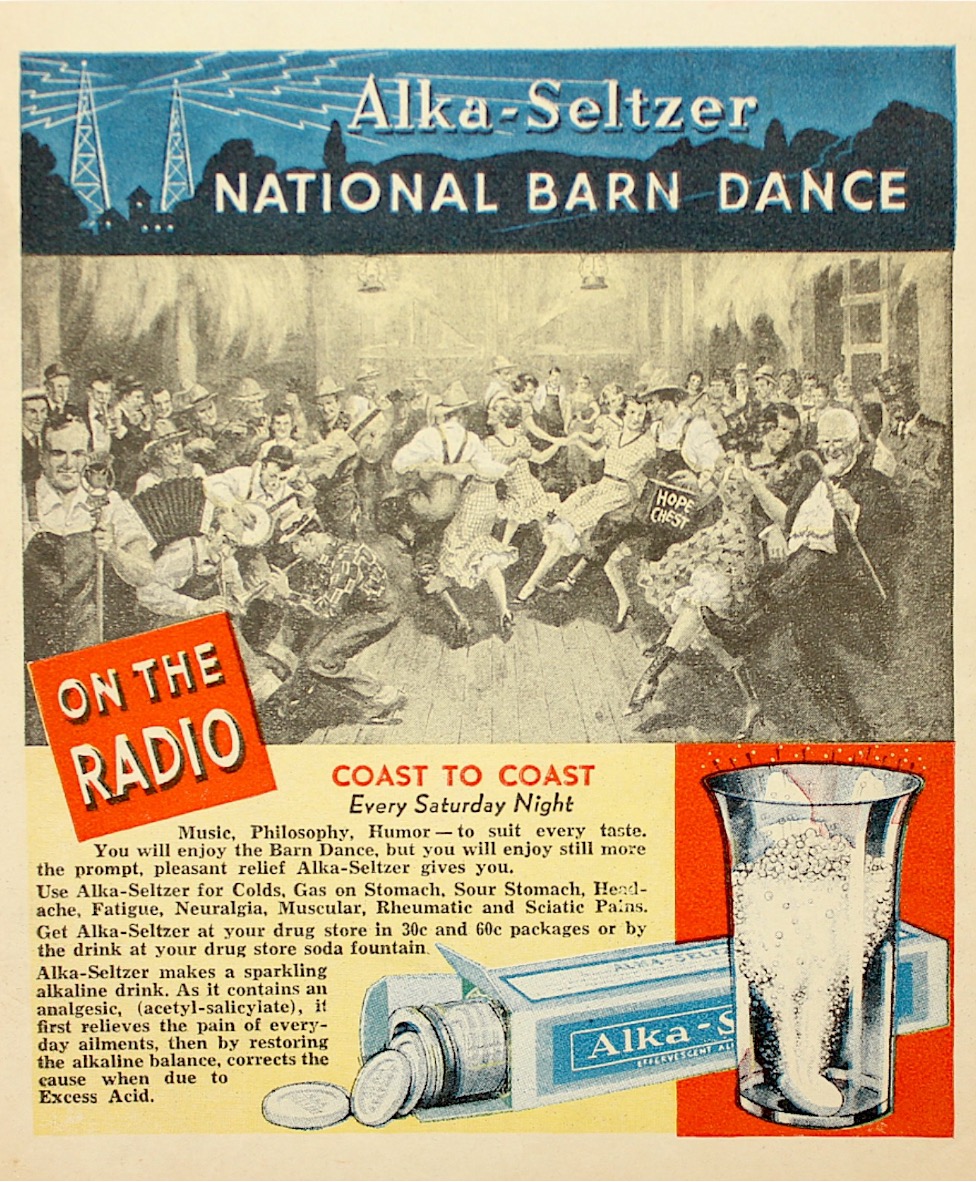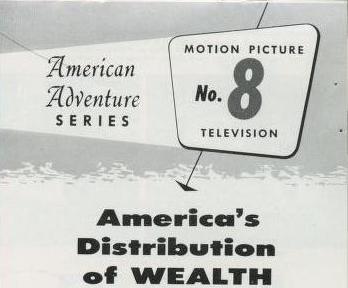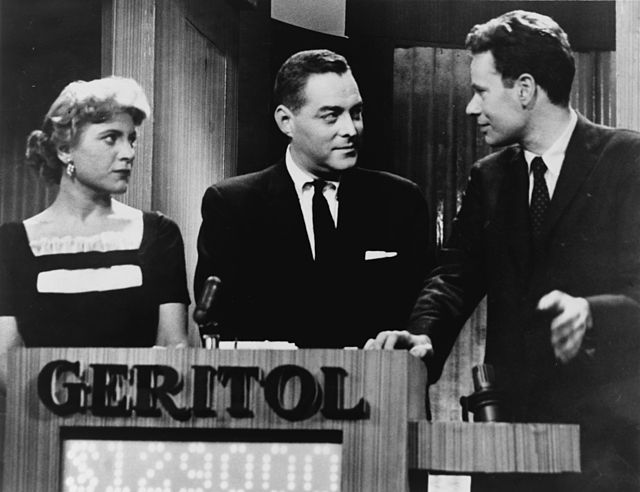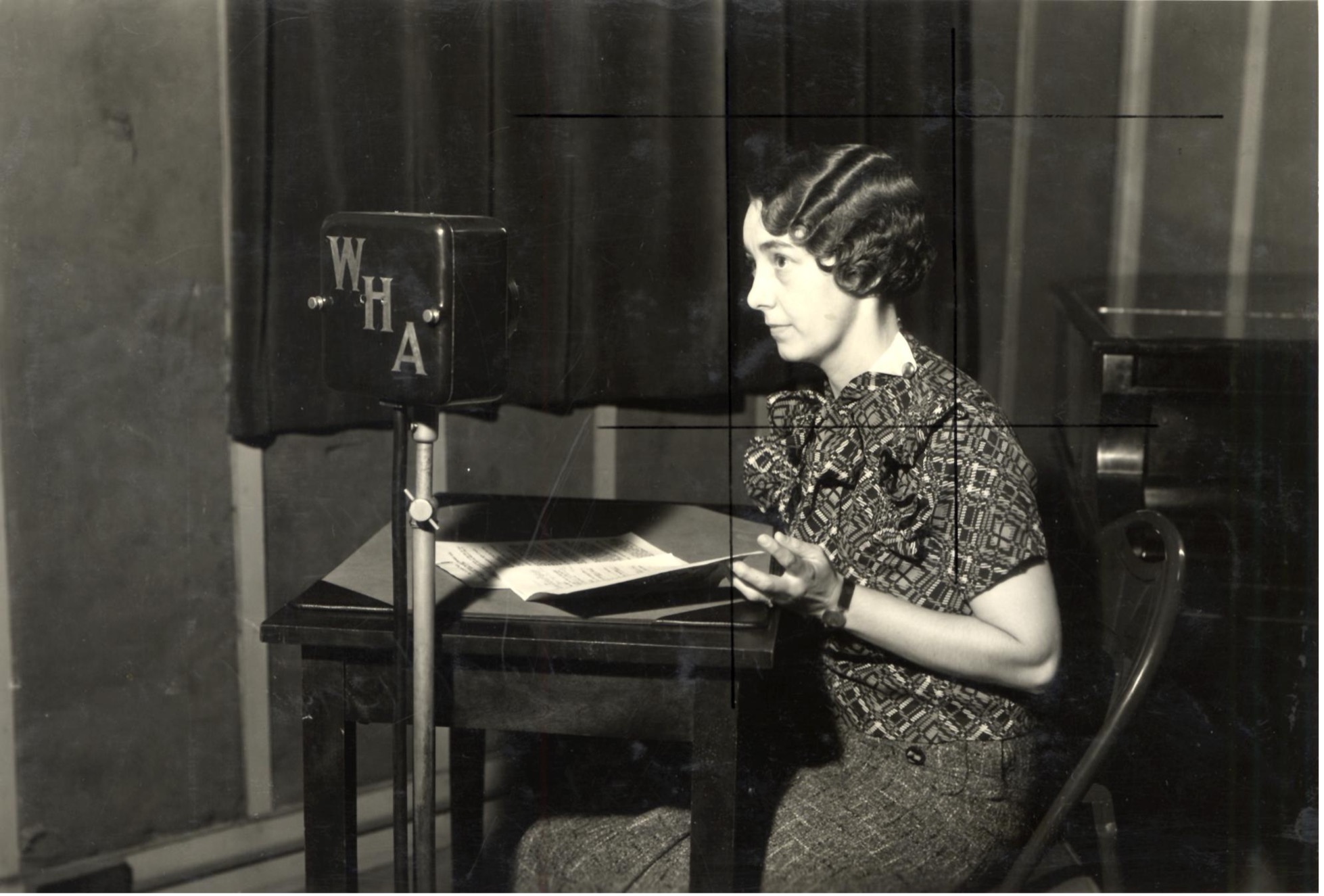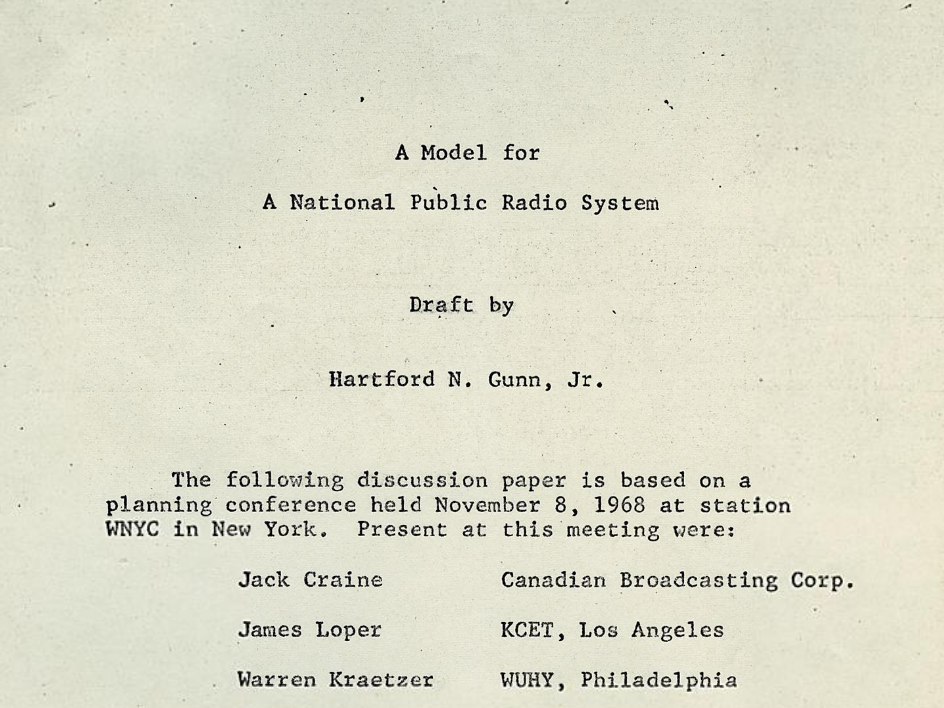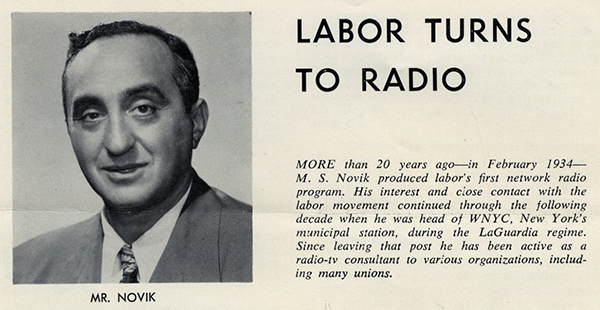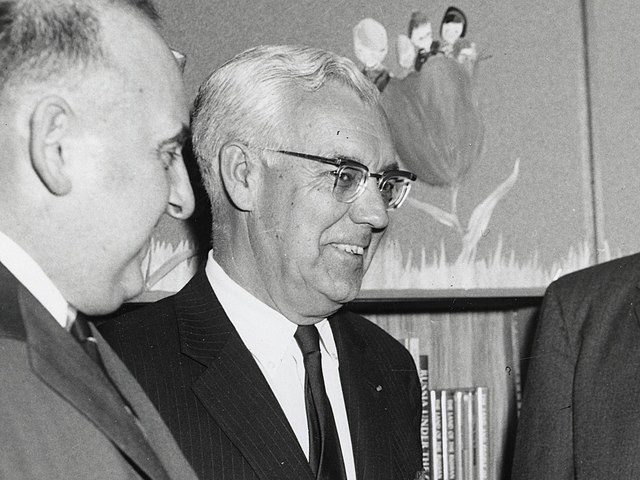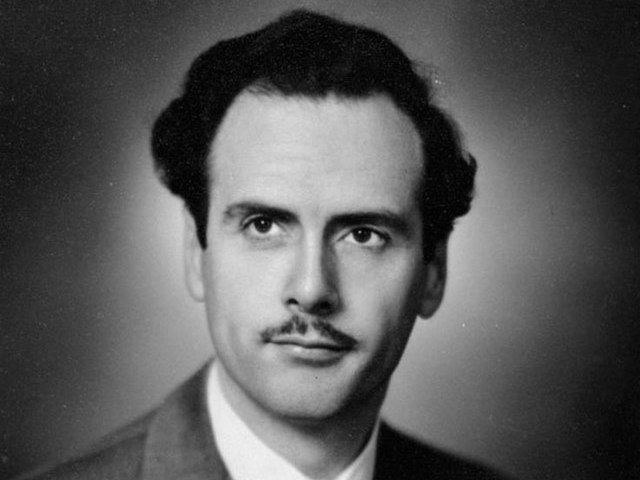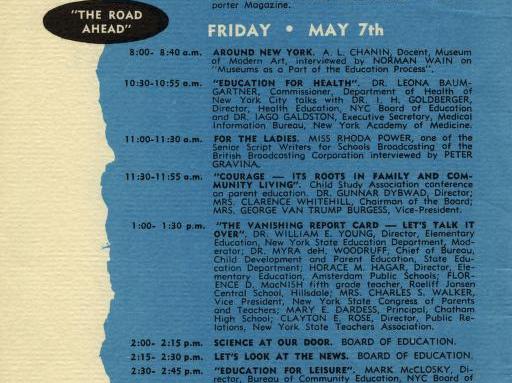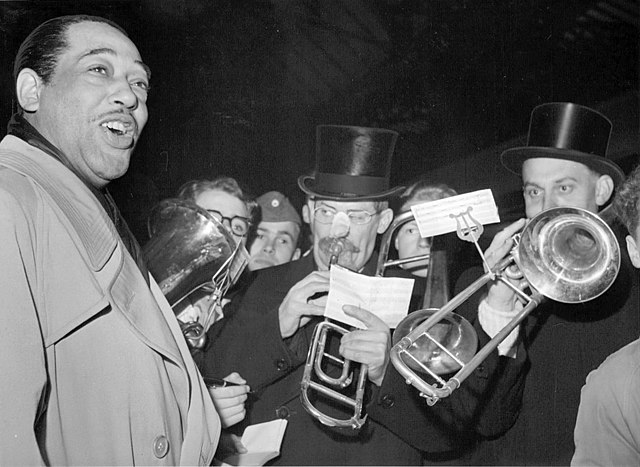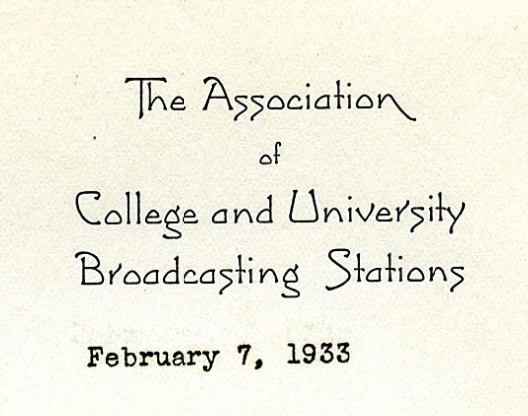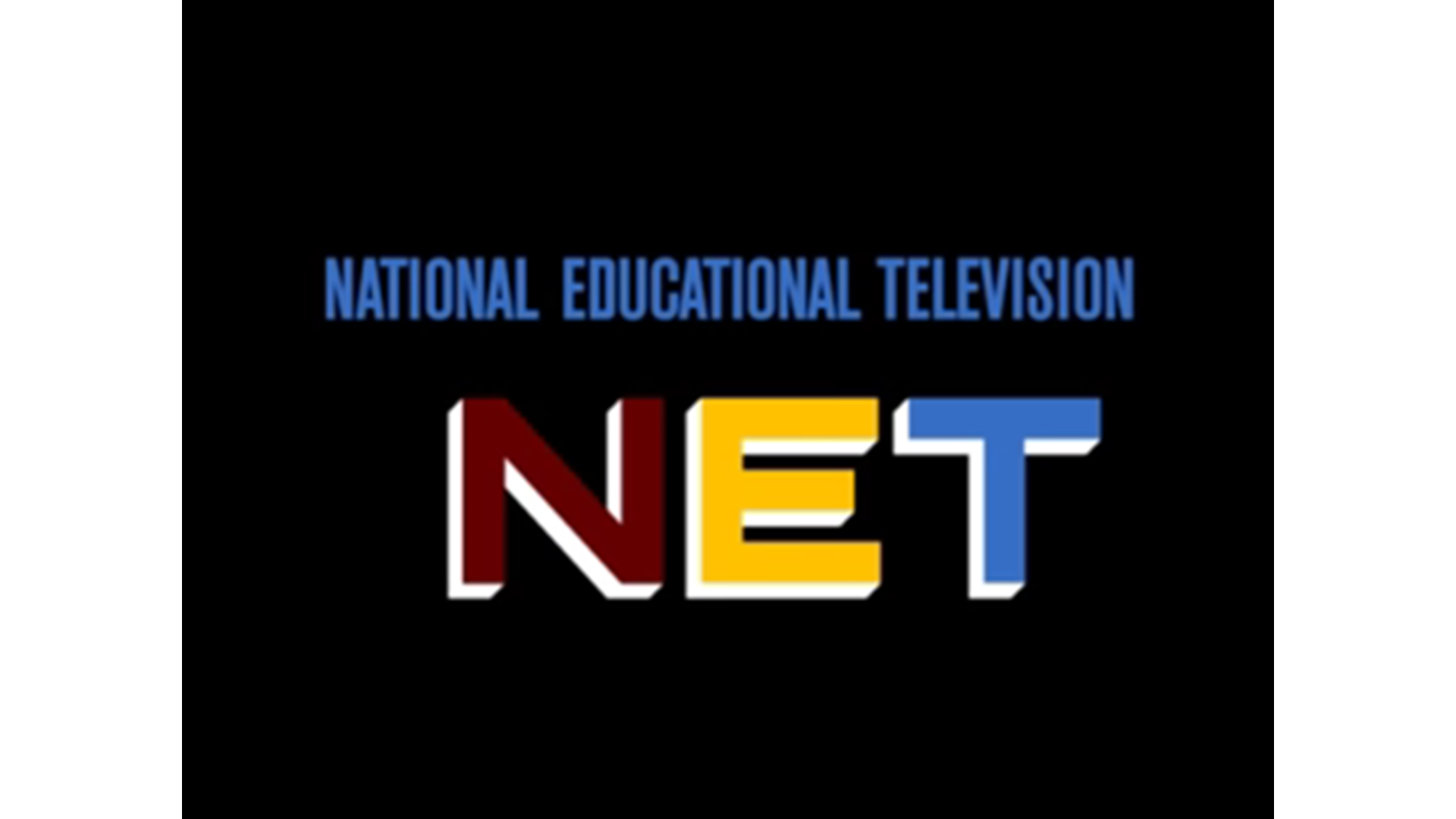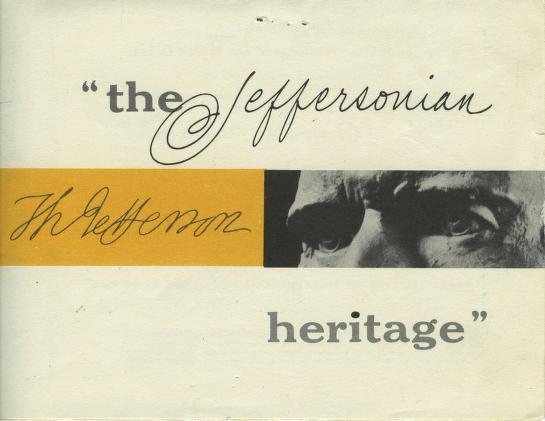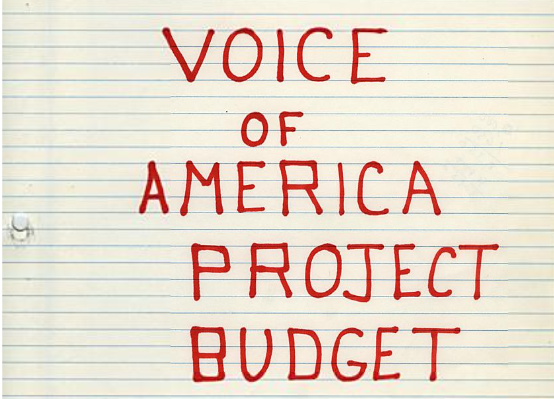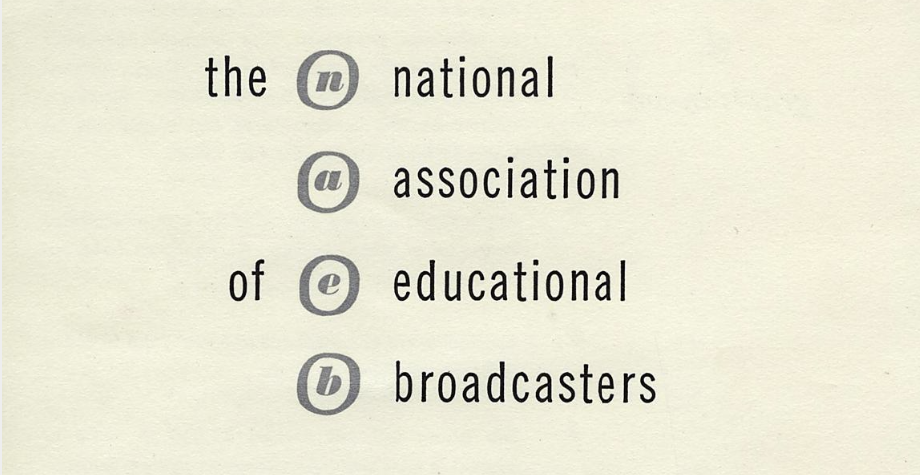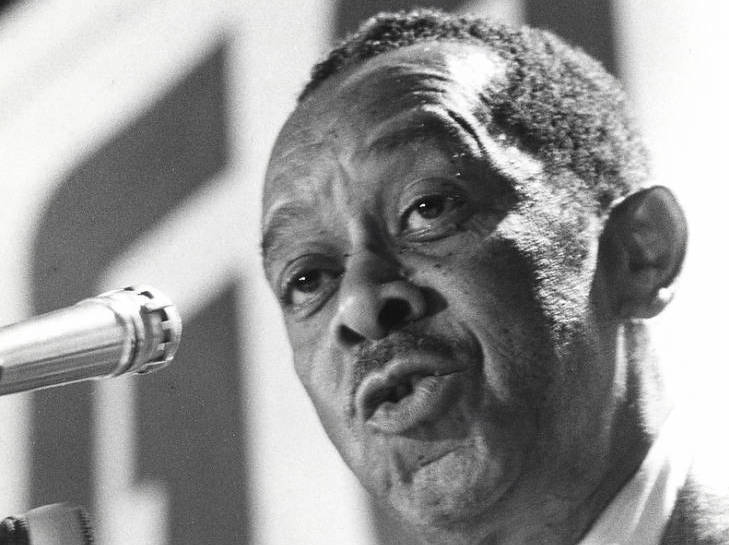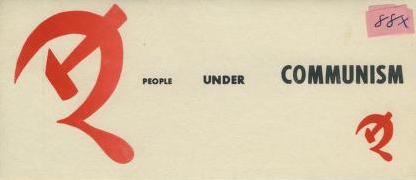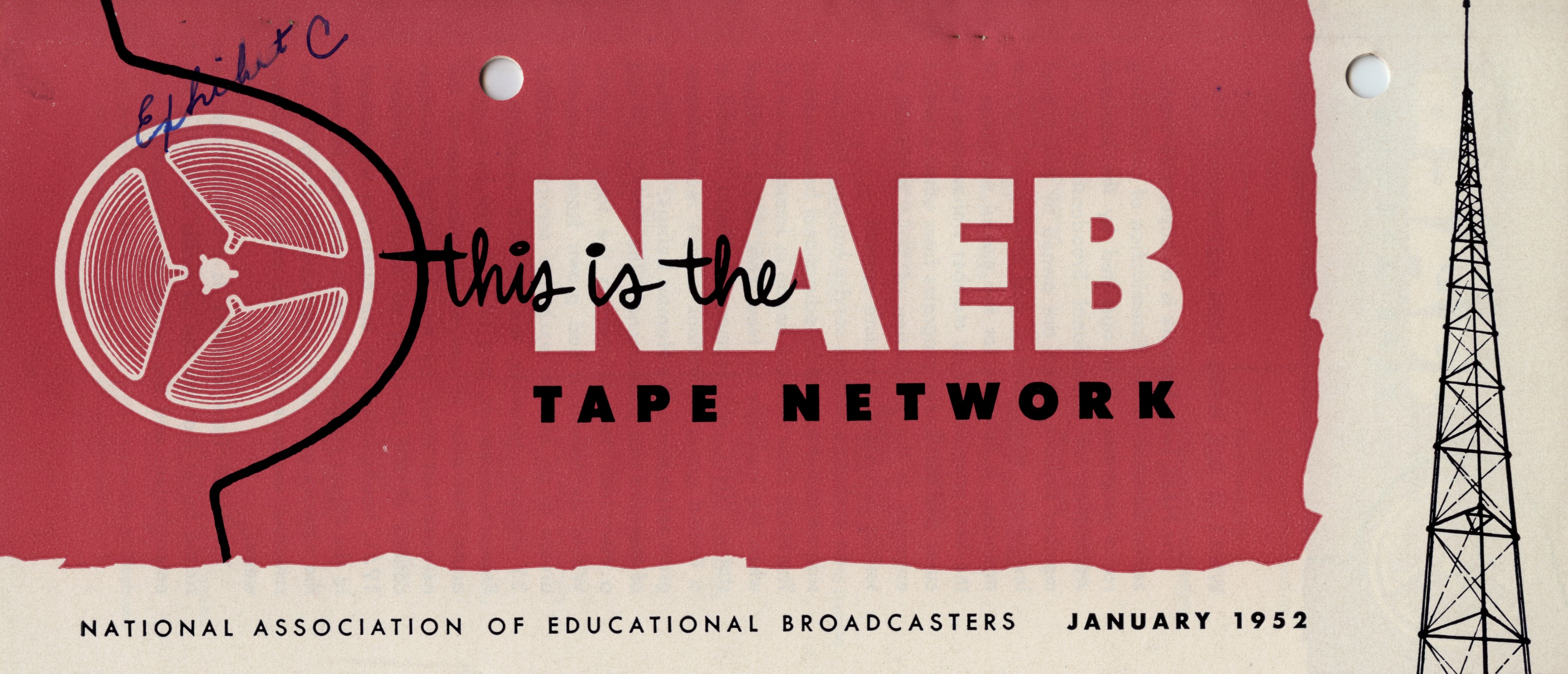Exhibits
- Poetry Programming in the NAEB Collection
- Women’s History in the NAEB Collection
- Burton Paulu and Musical Programing
- Children's Media in the NAEB Collection
- Dance on the Radio: An Exploration of Dance Programs in the BAVD Archives
- Economy and Business in the NAEB Collection
- Ethic for Broadcasting
- From “Good Morning Homemakers!” To Singing the “Custom Made Women’s Blues”: Talking to Midwestern Farm Women over the Radio
- Inventing a Service: How Educational Radio Became Public
- Labor and the NAEB
- Latin America in the NAEB Collection
- Marshall McLuhan and the Understanding Media Project
- Medicine and Health Care in the NAEB Collection
- Music Programs in the NAEB Collection
- Origins of the NAEB and Educational Media
- Pioneers and Protectors of PBS Journalism
- Real and Vibrant History: The Jeffersonian Heritage
- The Global Politics of American Culture and the English Language: A Voice of America Survey
- The NAEB and the NETRC
- The NAEB's Programs for the Disadvantaged
- The NAEB’s Cold War: The Ambitions and Tensions of “People Under Communism”
- The Organizational Structure of the NAEB
The three programs devoted to poetry in the NAEB collection—Poetry and the American, Poetry in Song, and What Is Modern Poetry—showcase the work of such celebrated poets as T.S. Eliot, Robert Frost, Emily Dickinson, Dylan Thomas, and e.e. cummings. Far from the individualistic, personal understanding we have of poetry performance today, however, not one of these programs features recordings of poets reading their own poems. Instead, lecture-recitals performed by professors and actors (and, in the case of Poetry in Song, musical accompaniment) take center stage, setting in relief what is arbitrary and strange about what we take for granted in poetry performance today.
In the area of women’s history, the National Association of Educational Broadcasters (NAEB) collection offers aural counterpoints to the popular culture of the late postwar period for critical study. This exhibit examines one such counterpoint: American Woman In Faction and Fiction: From Colonial Times Until the Present Day, a series born of a collaboration between University of California - Berkely faculty and the local radio station KPFA that brought to life important moments in women’s history and dramatized the lives of women over the last two centuries as revealed in excerpts from American novels. Written, directed, and co-produced by Dr. Virginia Maynard Levy (1911-2010), the drama and literature director of KPFA, this series is an important example of local, female-produced radio content, a rarity in mainstream media at the time. Maynard Levy received a citation for distinguished programming from the NAEB for her efforts.
Public Broadcasting arose in the U.S. during the 1920s, a time of intense anxiety around the country’s educational and aesthetic preparedness on the world stage. In the music community this gave birth to a robust music appreciation movement focused on instilling the value of classical music in young minds. One advocate for classical music on public radio was Burton Paulu. He came to Minnesota to get a degree in music from the University of Minnesota in 1931 and got a job at KUOM. During WWII, Paulu temporarily left KUOM to serve in the Office of War Information. He returned after the war with a new vision for what music over the airwaves could and should do, and he applied this to his work as a radio manager and an advocate for public radio.
During the 1950s and 1960s, the baby boom and a national focus on domesticity resulted in an obsessive concern over the status of those children. This period was filled with discussions that inflected upon children, ranging widely from new kinds of parenting techniques, such as Dr. Spock’s “natural loving care” approach, to the psychological effects of threat of nuclear annihilation, to the supposed social and cultural decline associated with juvenile delinquency. These topics and more are all part of NAEB station programming like How's The Family?, Exploring the Child's World, and Coming of Age, as well as discussions about children’s media consumption in NAEB documents.
“Radioing about dance”: that would be ridiculous, right? After all, the visual and the spatial are two dimensions that radio famously lacks. Surely, dance has to be seen to be appreciated, so dance and radio ought to be antithetical.
But even that distinction falls apart quickly. Indeed, one of the very first blockbusters of broadcasting named “dance” in its title: WLS’s National Barn Dance, which hailed listeners as an exuberant community of dancing fools in a great big old hoedown. Since then, radio has conjured the suave dancer at the hotel ballroom, the energetic teen at the sock hop, the sinuous bumper at the discotheque—encouraging listeners at home to join in a communal fantasy and also dance.
Radioing about dance, then, turns out to be a complicated phenomenon, and the archives available through Broadcasting A/V Data reveal radio’s participation in constructing the cultural place of different forms of dance, as well as dance’s participation in constructing different forms of radio.
Throughout its history, the NAEB produced many programs focused on issues of economy and business. In this exhibit, author Kit Huges sketches the evolving aesthetic strategies and viewpoints found within these programs, from Document: Deep South's "regionally-accented" promotion of the widespread benefits of a continuously increasing economy to Sounds of Poverty's student-oriented approach to first-person testimonies of people living in deep poverty in Appalachia during the days of President Johnson’s War on Poverty and Community Action Programs. The programs serve as both historical documents (like a fascinating live two-hour call-in show with President Carter hosted by Walter Cronkite) and contain interesting ideas that still feel fresh today (like a discussion around government-funded, year-long sabbaticals for every worker at rate to maintain full employment despite less work to go around).
In the wake of the late 1950s quiz show and payola scandals, the NAEB funded a series entitled Ethic for Broadcasting that sought to puzzle out how radio and television might be reformed to better serve the needs of the American public during tumultuous times. Among the better-known names featured are broadcasters Mike Wallace, David Brinkley, David Susskind, and Sylvester “Pat” Weaver; FCC commissioner Newton Minow, and “Blue Book” author Charles A. Siepmann, with others drawn from business, journalism, education, and the clergy. The program lets its chosen interlocutees weigh in not only on the above scandals but on how television might be improved more generally, and what role it should play in American public life, offering arguments on television's then-current state while also envisioning its future.
Whether in women’s history or in sound studies, preserving audio, especially the voices of housewives, has rarely been prioritized. To tell the story of women’s lives in twentieth-century America as told on radio, for example, history can’t be written only from what is found, but by stringing together pieces of audio and archived documents that together tell a more complete story. The Broadcast A/V project offers opportunities across four non-commercial media collections to piece together how rural women were imagined and addressed by educational radio throughout the twentieth century
In 1967, backers of non-commercial radio won a great victory. Four years after losing its major financial supporter, the Ford Foundation, reformers saw the Public Broadcasting Act of 1967 was signed into law, creating the Corporation for Public Broadcasting. Although initially intended to address television only, last minute efforts by educational radio veterans and handwritten and scotch taped additions to the bill expanded its focus to include radio broadcasting in the corporation’s remit. Now however, the rag-tag group of educational broadcasters who had worked tirelessly with scant funds for decades had to develop an actual service and it some ways, their legacy hurt them as much as it helped them.
Organized labor and educational broadcasters often found common cause in the US. Along with others, unions and educational broadcasters joined forces in the late 1920s and early 1930s to resist a regulatory paradigm that favored commercial radio. Yet, as documents surfaced through Unlocking the Airwaves reveal, the relationship between organized labor and educational television extended beyond forms of mutual solidarity. This exhibit explores that relationship through the work of Morris Novik, an NAEB leader who, in the 1950s and 1960s, was critical in negotiating relationships with trade and talent unions in the noncommercial television sector and in discerning how and to what degree labor would factor into the imagined public that educational stations would serve.
NAEB programs about Latin America broadly centered on themes like the rise of communism and the Cold War in Latin America, Cuba’s revolution of 1959, John F. Kennedy’s Alliance for Progress, and the rise of Latin American area studies in U.S. universities—however, they largely failed to conceive of Latin American descendant people—what are now known as Latinxs—as part of the U.S. imaginary. This exhibit takes a closer look at three such programs: Contemporary Revolution in Latin America, a documentary series on problems facing Latin America during the late 1950s and early 1960s; The Yankee Dollar, which focused on the U.S. dollar's impact in Latin America; and Latin American Perspectives, a series of lectures about current Latin American problems and their historical setting.
In the late 1950s, just as the Canadian media theorist Marshall McLuhan’s profile was beginning to grow, the NAEB commissioned him to perform a study regarding the potential educational uses of new media and the implications of emerging media for education at various levels. Upon securing a grant from the National Defense of Education Act, the NAEB and McLuhan embarked upon a year-long project that resulted in a report entitled The Report on the Understanding Media Project. Although it was not well received at the time, the papers in the NAEB collection pertaining to the project provide a substantial degree of insight into McLuhan’s working process and the evolution of his ideas pertaining to the media and education.
The NAEB collection available through Unlocking the Airwaves, provides a glimpse into what medicine and health programming sounded like on radio from the late 1950s through the 1970s. Much of the medical knowledge here is undoubtedly outdated, providing a sense of the advancements in health sciences in the intervening decades. However, even more interesting are the insights this collection offer into postwar Americans’ ideas—very different from today’s—about who is an “expert,” what endangers health, and how society should respond, ideas that only make sense in the context of the Cold War, the sexual revolution, and the counterculture of the 1960s. Programs covered in this exhibit include H Is for Joy, The V.D. Epidemic, Doctor Tell Me, and Your Doctor Speaks.
Presented in collaboration with music departments, conservatories, professional ensembles and noncommercial radio stations, these NAEB music programs aired between the early 1960s to early 1970s. They provide a fascinating glimpse into midcentury perspectives on music education and music broadcasting in the U.S. While the majority of their narratives feature white male voices, and emphasize Western classical music, a significant diversity of recordings, styles and attitudes reflect important cultural and technological changes in both the American academy and the radio industry. Programs covered in this exhibit focus on classical music (Beethoven: The Man Who Freed Music and Music in Our Time: 1969), jazz (Evolution of Jazz and Jazz of the Past), and folk/Americana/international (Music Around the World and The Old Record Box I & II).
Affiliates of the National Association of Educational Broadcasters (NAEB) built American public media between 1925 and 1967, making it one of the central trade organizations of American media history. Originally founded in 1925 as the Association of College and University Broadcasting Stations (ACUBS), the educational technologists of the NAEB sought to utilize radio to increase equal access to education. Its history gives us an opportunity to trace the key players, events, and content that engendered our community, public, and distance learning institutions.
Just a few years after its launch in October 1970, the Public Broadcasting Service (PBS) found itself being targeted by President Richard Nixon who requested that "all funds for Public Broadcasting be cut immediately." How did a non-commercial broadcaster with deep educational roots run afoul of the most powerful man on earth so early in its existence, and what individuals and institutions may have played a role in initiating or navigating the crisis? At least three relevant historical figures—as well as a legendary adversary—are documented in the BAVD collection. The dedication and contributions of Fred W. Friendly, Robert F. Schenkkan, and Hartford N. Gunn, Jr. live on in the system’s ongoing commitment to journalistic integrity.
In 1952, The Ford Foundation's Fund for Adult Education awarded the NAEB an unprecedented $300,000 to produce a set of high-quality programs - The Jeffersonian Heritage, Ways of Mankind, and People Under Communism. Within this context, the leaders of the NAEB sought to make their mark and extend their own sphere of influence with ambitious radio series. Of these, The Jeffersonian Heritage was arguable the NAEB's most commercially popular offering, starring Claude Rains as Thomas Jefferson in a drama series about his life. The series received rave reviews, and, as part of its first foray into producing original content, the series signified a major shift in the NAEB's mission and purpose.
Radio programming, by its collaborative nature, connects people—in networks that can be easily mapped, but also in less visible, or inaudible, networks. In this exhibit, I share my exploration of the 240 pages listed under “Poetry Project Voice of America 1963-64,” which contains terse, revealing insights on the global politics of the English language and American culture, amid the Cold War and ongoing decolonization, from 77 radio stations all over the world, in response to a Voice of America questionnaire sent out by the well-known news broadcaster, who had becomes Director of the United States Information Agency, Edward R. Murrow.
Although the NAEB played an essential role in the development of educational television (ETV), the expansion of ETV in the 1950s and 1960s pushed the NAEB to recalibrate and reimagine its role within the educational broadcasting movement and reconsiders its relationships with local stations, other national organizations, and the philanthropic foundations that were the lifeblood of the sector until the late 1960s.
In May 1968, the NAEB launched an initiative called Programs for the Disadvantaged meant to “examine the role of educational broadcasting regarding programming and employment practices for minority groups.” Led by Kenneth A. Clark, the newly formed team surveyed and advised member stations on outreach to disadvantaged communities through programming, technical training, and education. Highlighted in this exhibit are two examples of programming showcased by Programs for the Disadvantaged: The Negro American, a radio lecture series by Professor Benjamin Quarles of Morgan State College, Baltimore, made in late 1967 in Detroit Public Schools, and Seeds of Discontent, which was written, produced, and hosted by Hartford Smith, Jr. and WDET out of Wayne State University in Detroit.
People Under Communism, a 21-episode series that was produced and distributed between 1951 to 1953, was the most ambitious and complicated series that the NAEB ever created. Through a mix of seven sonically rich one-hour programs with high production values, thirteen half-hour or hour long lecture/expert conversation-centered episodes with much lower production values, and one imported thirty-minute BBC documentary, People Under Communism forcefully called out and criticized Soviet propaganda and thought control in nearly every episode. But in its intermingling of cutting-edge foreign policy research about the escalating Cold War with polished dramatic sonic aesthetics akin to high-end commercial programs, People Under Communism itself serves as an interesting case study of the line between education and propaganda.
The NAEB collection prioritizes correspondence and publications produced by the organization’s headquarters, but some parts of the collection highlight the contributions of member stations and their representatives. These materials, especially documents related to NAEB committee work and meetings like regional events, point to the unique structure of the organization and its division of labor beyond the national staff. This exhibit details how the NAEB expanded from a small executive staff based at the University of Illinois and various committees comprised of NAEB members from across the United States to a complex, member-based organization with stakeholders at many different levels.
